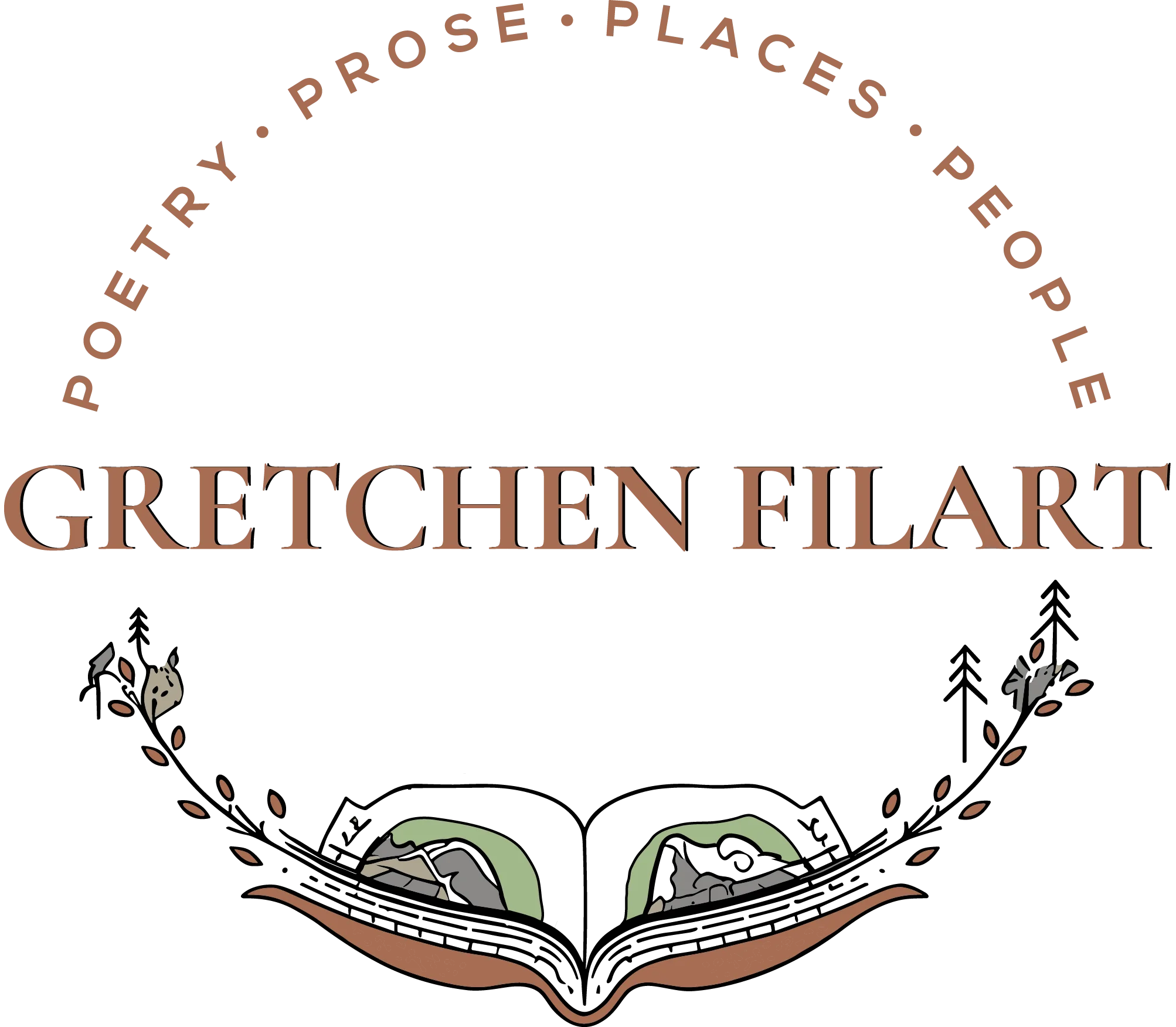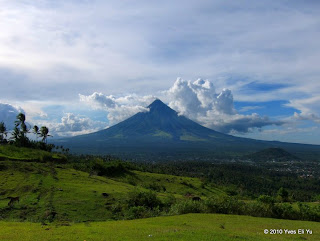Albay is one of the six provinces in the Bicol region in Luzon. It is comprised of 18 municipalities, including Daraga, home to Mt. Mayon – an active volcano whose almost-perfect cone shape attracts visitors across the country.
Mt. Mayon
Photo courtesy of Yves Eli Yu
I’ve been to the province several times, usually to visit my lola and some relatives who hail from a small town at Mayon’s foothill, Matnog. The natives speak the native Bikolano dialect, although majority of the people do know English and Tagalog as well.
Matnog after Ondoy
Albay is a veeery long road trip away from Manila (around 10-11 hours by car). A bus ride from the Cubao Terminal takes around 11-13 hours with numerous stopovers. During PNR train rides, we would spend around 14-16 hours to the PNR terminal in Daraga, followed by a 20 minute-tricycle trip to Daraga town proper. A plane ride of course, is the fastest means of transport and only takes an average of 40 minutes from the NAIA airport (if you’re coming from Manila).
At my uncle’s yard in Matnog
Albay brings back good old memories of childhood: playing house, cooking rice and fried fish in native palayok, scaling up the hillside at the Mayon Resthouse with my sister and cousins, lying on a hammock in my grandmother’s house, surrounded by coconut trees, brown earth and silence.
A huge rock in Matnog from one of numerous Mayon explosions
Over the years, my family and I have visited notable attractions in Albay and its neighboring provinces. Though Albay is best known for the beautiful Mount Mayon (which stems from the native magayon, which means beautiful), Albay offers much more for the eager traveller. Recently, a baywalk area in Legazpi has been developed into a recreational area named Embarcadero de Legazpi. This atypical mall features high-end resto bars, a 350-meter zipline above water overlooking Mayon, a bowling alley and Go-Kart. I hear the sights are wonderful especially at night. It’s definitely one of the places I plan to visit when I return to Bicol.
Embarcadero de Legazpi
Photos courtesy of www.calvinshub.com
The province is also recognized as a major producer of abaca and is well-known for its high quality abaca handicrafts. You’d be surprised how affordable they are here. A small abaca handbag for instance, only costs P50-60 in local markets whereas the same item is pegged at P150-200 in Manila.
A few of my abaca bags from Bicol; both below P300
Abaca tissue paper holder. Bought for P50 in Daraga
Nestled on about one-third through the very tip of Mt. Mayon is one of Albay’s most popular landmarks, the Mayon Rest House Park. It is easily accessible from Tabaco City, although you most likely would need to bring your own vehicle or rent a tricycle or jeepney, because there’s no public transport treading that road up.
Inside the planetarium
Serving as a base for the Philippine Astronomical, Geological and Seismological Society, the park also holds a planetarium, which features detailed information and life-sized photos of past Mayon eruptions, and a small souvenir shop.
All fog, no backdrop 🙁
Mayon Rest House is also a famous starting point for mountain climbers aiming for Mayon’s 8,500-foot peak. This building, while old, never fails to yield breathtaking views of Mayon Volcano and the Albay skyline from 2,500 feet above. With its fresh air and cool temperature, the park not only offers scenic drives, but is also a suitable picnic spot for those who wish to experience Mayon up-close without needing to trek to the crater.
One of many picnic huts situated on the slopes of the Mayon Rest House
My cousin. Overlooking the Planetarium below.
Standing as a grim reminder of the Mayon Volcano eruption in 1814 that swept the town of Busay in Cagsawa, the Cagsawa Ruins in Legazpi City is another must-see for Albay visitors. This historic belfry is the only living remnant of the said eruption, with the entire Cagsawa Church buried underneath. The Cagsawa Ruins offer postcard-quality photos, with Mayon Volcano sitting majestically behind it.
Cagsawa Ruins
Photo courtesy of Storm Crypt
Cagsawa belfry
Within the ruin’s vicinity are huge boulders, small souvenir shops and exotic plants and orchids for sale. It is located about 8 kilometers from Legazpi City’s main business district, and can be reached by jeepneys bound for Polangui, Camalig, Oas, Guinobatan, Ligao or Libon.
Home to over 450 animals, Albay Park and Wildlife is Legazpi City’s only zoo and is a perennial favorite among families. For an entrance fee of P20 (P10 for kids 4 feet and below), visitors can enjoy a variety of flora and fauna, huge picnic area with gazebos and cottages, and a vast lagoon for refreshing boat rides. Kalesas and bikes are also available for rent. The park is open from Tuesdays to Sundays, from 8AM to 6PM. It is located beside the Legazpi Airport.
Boating at Albay Park’s lagoon
If you’re wondering what rare black sand feels like, then Sogod Beach in Bacacay is the perfect getaway for you. Situated in the eastern portion of Mayon, Sogod Beach offers a 143-kilometer jet-black coastline. Spawned of volcanic origin, Sogod Beach is characterized by gritty, grainy sands and peculiar, uncommercialized beauty amidst towering coconuts and calm waters.
Sogod Beach, Bacacay in Tiwi
While you’re in Tiwi, head out to Tiwi Hot Springs National Park. While the area can get busy especially on weekends, its soothing natural thermal springs are guaranteed to rejuvenate tired muscles and alleviate the nerves.
Daraga Church
Photo courtesy of madzieph
Don’t forget to drop by Our Lady of the Gate (more popularly known as Daraga Church) just within Daraga’s busy central district. This magnificent Baroque church is perched on a hill facing Mt. Mayon, offering one of the most astounding views from the city.
How to Get to Legazpi, Albay:
By car:
Take the South Luzon Expressway and head for San Pablo City. The entire trip takes around 10 hours on the average and you will pass by several northern provinces including Quezon and Camarines Sur before reaching Legazpi. By the way, if you’ll be taking the infamous Bitukang Manok or Zigzag road in Quezon to cut the trip short, take extra caution especially when it’s raining, because the road does get slippery and you wouldn’t wanna fall to a treacherous ravine below. I also wouldn’t recommend using this road if you’re driving at dawn or at night.
By air:
From any point in the Philippines, fly onward to Legazpi. Legazpi has jeepneys and tricycles to most of the places listed above, or you could rent one especially for you. The flight from Manila typically takes 40 minutes to 50 minutes.
By bus:
Take a bus from the Cubao terminal . Philtranco, Cagsawa Tours and Superlines all have regular schedules going to Legazpi..
By PNR train:
Take the train from the PNR station in Pasay to Legazpi City. This is probably the cheapest transport means to Legazpi, though the longest, too. There’s a coach passenger area where you can stretch your legs comfortably and sleep all throughout the trip . I think the rate is around P500. Be sure to bring a thick blanket with you; the aircon feels like 18 degrees or below especially at night.























wow super like. Its almost 10years the last time na nag-vacation kmi s bicol, Imissthat! 🙂
Hi Analyn! Are you a Bicolana? Nakakamiss nga ang Bicol, there's so much to explore in it. It's one of the most underrated provinces in the Philippines, IMO.